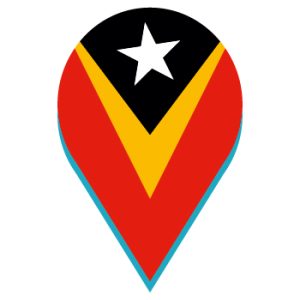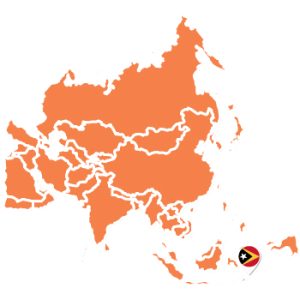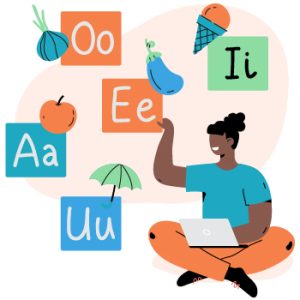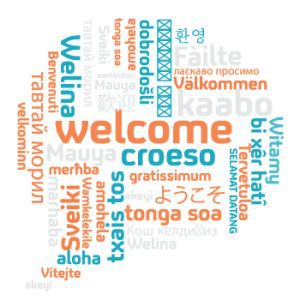What is the official language of Timor Leste?

Overview of Timor Leste
Timor Leste, also known as East Timor, is a small country situated in Southeast Asia. The Portuguese formerly colonized it in the 16th century and later ruled by Indonesia until it gained independence in 2002. The government has a population of over 1.2 million people with a mix of various ethnic groups and cultures.
Indigenous languages are prevalent in Timor Leste, and there are two official languages recognized by the government – Tetum and Portuguese. Tetum is divided into two dialects – Tetun Prasa and Tetun Terik. The Tetum language was initially used as the language of resistance during Indonesian rule and eventually became the primary language of school instruction.
During the Portuguese rule, the Portuguese language and culture had significant influence, and it was the language of administration, education, and religion. After independence, the government aimed to promote the use of Portuguese to connect with the Lusophone world, but its use remains limited.
English is gaining popularity in Timor Leste and serves as the medium of instruction in some primary schools. Additionally, people speak several local languages, such as Mambae, Makasae, and Fataluku, in the country.
Timor Leste’s culture is a rich mix of its colonial past and indigenous roots. Its first president, Xanana Gusmão, was vital in promoting Timorese culture and languages and unifying the country after a protracted conflict.

Timor Leste Language History
Timor Leste, also known as East Timor, has a rich linguistic history. Before colonial rule, Timor Leste had numerous native languages spoken throughout the island. When the Portuguese arrived in the 16th century, they introduced their languages of East Timor and culture, which influenced the country’s language development.
During Indonesia’s occupation of Timor Leste from 1975 to 1999, the Indonesian language was widely used in education and government. After achieving independence in 2002, the Timorese government declared Tetum and Portuguese their official languages. This decision was made in honor of Xanana Gusmão, the country’s first president, who used his knowledge of both languages to unite the nation during its fight for independence.
Portuguese remains an important colonial language in Timor Leste, and its culture is still evident throughout the country. However, Tetum is the most widely spoken Timorese language and the mother tongue of almost half the population. English is also becoming increasingly popular as the country looks to establish stronger ties with other nations.
In her work in 2004, Catharina Williams-van Klinken delves into the intricate landscape of Tetum spelling, asserting on page 58 that variations in spelling persist despite spelling reforms. The original spelling, as emphasized by Williams-van Klinken, holds cultural and linguistic significance.
Diversity in Timor-Leste
Damien Leiris, in the “Ortografiku ba Lia-Tetun-Tetum Spelling Guide,” further contributes to the discourse on linguistic standards. In the context of Timor-Leste, literacy campaigns are essential, considering the diverse distribution of dialects by sex and the prevalence of rural dialects. The National University of East Timor plays a pivotal role in addressing these linguistic nuances and advocating for the preservation of the original spelling, reflecting the broader efforts to maintain linguistic diversity in the region.
The East Timorese, hailing from a diverse cultural tapestry, navigate their linguistic identity through languages like Tetun Dili and Tetum Prasa. Scholars like Williams-van Klinken and Geoffrey Hull delve into the intricate web of language policy processes, exploring the Ethnography of language policy.
Official recognition becomes a pivotal aspect in this linguistic landscape, shaped not only by bureaucratic measures but also by underlying ideological processes. This complex interplay is often explored in academic discourse, with special issues dedicated to understanding the nuances of regional languages and their role in shaping the cultural fabric of East Timor.
Today, many Timorese people are multilingual and speak multiple languages, reflecting the country’s diverse linguistic history.
The official language of Timor Leste
Timor-Leste designates Tetum as the official language spoken by most of the population while recognizing Portuguese as an official language alongside Tetum. This is due to the country’s long history of Portuguese colonization, which lasted for over 400 years. During this time, the Portuguese culture and language heavily influenced Timorese society.
After gaining independence in 2002, Xanana Gusmão, Timor Leste’s first president, emphasized the importance of maintaining strong ties with the Portuguese-speaking world. As a result, Portuguese language education has been promoted throughout the country, with many schools offering it as a subject.
Despite this, Tetum remains the most widely spoken language in Timor Leste, with over half of the population using it as their primary language. In Timor-Leste, people widely speak English, especially in urban areas and among the younger generation educated in English. Additionally, Indonesians use Indonesian for official communication with neighboring Indonesia, while various indigenous languages are also spoken.
Portuguese Language in Timor Leste
Colonial authorities introduced Portuguese to Timor Leste, and the language has remained official since the country’s 2002 independence. Today, Timorese citizens use Portuguese in government and education, and many have some degree of proficiency.
One notable figure in Timor Leste’s history who preserved the Portuguese language is Xanana Gusmão. Gusmão was a crucial leader in the resistance against Indonesian occupation and later served as Timor Leste’s first president. He emphasized the importance of the Portuguese language in the country’s national identity and advocated for its continued use in government and education.
However, despite its official status, the use of Portuguese in Timor Leste remains limited. Tetum, as the national language, is spoken more widely, and many schools now prioritize teaching Tetum and English over Portuguese. Despite this shift, the Portuguese legacy remains significant in Timor-Leste’s history and continues to influence government and education.

Tetum Language in Timor Leste
Tetum is one of the official languages of Timor Leste, along with Portuguese and English. It is also the most widely spoken language in the country. Tetum is an Austronesian language closely related to the languages spoken on nearby islands, such as Indonesian and Malay.
Tetum was essential to the country’s struggle for independence from Indonesia. Xanana Gusmão, a key figure in the independence movement, was known for using Tetum in his speeches and writings. In fact, after his release from prison in 1999, he famously delivered his victory speech in Tetum.
Since independence, Tetum has played an essential role in Timor Leste’s culture and society. It is the primary language of instruction in many schools and is used in media and government communications.
While Portuguese remains an essential language for official purposes, Tetum’s popularity and widespread use ensure that it will continue to play a central role in Timor Leste’s linguistic landscape for years to come. Read more about Portuguese translation.
The population of Timor-Leste, situated on the Timor island, reflects a rich linguistic diversity. Damien Leiris’s “Ortografiku ba Lia-Tetun-Tetum Spelling Guide” contributes to the understanding of language nuances in the region. Catharina Williams-van Klinken challenges conventional views, stating otherwise on page 58, emphasizing the dynamic nature of linguistic practices.
In West Timor, a distinct language landscape prevails, featuring not only native languages like Tetum Terik but also the influence of foreign languages. Native speakers, including prominent figures like Taur Matan Ruak, play a crucial role in preserving Timor-Leste’s cultural heritage through the maintenance and promotion of these linguistic traditions.
Diversity in Timor-Leste’s Institutions
Language attitudes play a significant role in shaping educational initiatives in Timor-Leste, as evidenced by programs implemented by institutions such as the National University of East Timor and the Timor-Leste Ministry of Education. The collaboration extends to government bodies like the Timor-Leste Ministry of Finance, which influences resource allocation for language-related endeavors. Adult literacy classes are strategically designed to cater to the diverse linguistic landscape, acknowledging the importance of distribution by mother tongue.
In addressing linguistic diversity, initiatives like the “Traveller’s Dictionary” aim to bridge communication gaps, especially in regions with distinct urban-rural dynamics. Scholars such as Conceição Savio and Melody A. contribute to the discourse on language attitudes and policies, examining their impact on population distribution and educational outcomes in Timor-Leste.
The Faculty of Education & Languages in East Timor explores linguistic diversity through courses and research, including Nancy Melissa Lutz’s work. Liturgical language, notably Tetun-Terik, gains importance through projects like the “Tetun Language Manual” and the Silva Project. The Corps East Timor and the Academy of East Timor Studies enhance the study of language in the region.
Resources like the “Encarta-encyclopedia Winkler Prins” and insights from scholars like Robert underscore the efforts to document and preserve linguistic heritage in East Timor. The Dili Institute of Technology plays a pivotal role not only in offering language education, as seen in the “Talk Tetum” program, but also in capturing the essence of East Timor through visual documentation in projects like “Dili Tetum Pictures.”
English Language in Timor Leste
In addition to Portuguese and Tetum, English is also recognized as the official language of Timor Leste. This recognition resulted from Timor Leste’s desire to participate in the global community and the presence of many English-speaking countries in the region.
Xanana Gusmão, former President and Prime Minister of Timor-Leste promoted English development in the country. He acknowledged English’s role in international communication and stressed the need for Timor-Leste’s proficiency in it.
English education is widely available in Timor-Leste, with many schools offering it as a primary or secondary language. International organizations and businesses in Timor-Leste use English, making it crucial for job seekers in the country.
Despite the emphasis on English, Portuguese and Tetum remain the primary communication languages among the local population. However, recognizing English as an official language shows Timor Leste’s commitment to being a globally connected and competitive nation. Read more about Bahasa Indonesian translation.
Other languages spoken in Timor Leste
In addition to Portuguese, Tetum, and English, several other languages are spoken in Timor Leste. These include Indonesian, which is widely spoken due to its historical ties with Indonesia. Other languages spoken by minority groups include Fataluku, Makasae, Mambai, Tokodede, and Bunak.
The late Xanana Gusmão, the first president of Timor Leste, was known for promoting multilingualism in the country. He emphasized the importance of preserving and promoting the various indigenous languages spoken in Timor Leste, which he saw as essential to protecting the country’s cultural diversity.
Timor-Leste presents a fascinating linguistic landscape deeply rooted in its historical and cultural context. The Austronesian language family forms the foundation of many languages in the region, with Bahasa Indonesia being a significant linguistic influence. The legacy of Portuguese origin is evident in the coexistence of languages like Uab Meto, reflecting the country’s colonial past. The Indonesian military presence has also left its mark, contributing to the linguistic diversity. Scholarly works, such as Nancy Melissa Lutz’s exploration of “Current Language Issues” and publications like “Suara Timor” and “Estudos de Linguas e Culturas de Timor Leste,” shed light on the intricate language dynamics in Timor-Leste. The country’s population, with its diverse linguistic affiliations, further emphasizes the Malay origin of many languages, creating a tapestry of linguistic richness in this Southeast Asian nation.
Efforts are ongoing to promote and preserve these minority languages, with initiatives such as language preservation programs and the publication of children’s books in local languages. These efforts are crucial in ensuring that the diverse linguistic heritage of Timor Leste is maintained for future generations to come.
Linguistic Tapestry of Timor-Leste
In West Timor, the diverse languages spoken reflect the region’s rich cultural and linguistic heritage. Uab Meto stands out, showcasing the unique heritage of the Timorese people. Bahasa Indonesian serves as the lingua franca, easing communication and administration across the region. Portuguese speakers highlight the historical influences that have shaped West Timor. Notable figures like Taur Matan Ruak and Mari Alkatiri fluently navigate these languages, embodying West Timor’s multifaceted identity.
The Indonesian military’s presence intensifies the linguistic mosaic, contributing to both tension and integration in West Timor’s socio-political landscape. The mix of Uab Meto, Portuguese, and Bahasa Indonesian highlights West Timor’s complex identity and cultural diversity. This blend of languages reflects colonial legacies, national unity efforts, and the preservation of local traditions.
Language issues in diverse regions often have negative connotations, as noted by Nancy Melissa Lutz in “Current Language Issues.” Debates commonly arise in multilingual societies where colonial history and national identity intersect, like in Portuguese Timor. Publications such as “LanguagesSuara Timor” highlight the complexities of managing multiple languages within a single national framework. These discussions reveal the tensions and challenges stemming from a multilingual mosaic in such regions.
In Portuguese Timor, Portuguese as a colonial language contrasts with indigenous languages and new lingua francas, revealing cultural preservation struggles. These language issues extend beyond academia, deeply influencing education, government policies, and social dynamics. This situation highlights ongoing negotiations between heritage and progress in post-colonial societies.
Tetum’s Evolution and Linguistic Dynamics in Timor-Leste
In “Talk Tetum” (2004), Catharina Williams-van Klinken provides invaluable insights into Tetum, particularly on page 58, challenging common perceptions. Her meticulous research highlights Tetum’s evolution within Timor-Leste’s socio-linguistic landscape, emphasizing the influence of Portuguese-educated speakers. Williams-van Klinken’s insights are complemented by Damien Leiris’s “Ortografiku ba Lia-Tetun,” a vital resource for mastering Tetum spelling and pronunciation.
Williams-van Klinken’s work deeply explores first-person singular usage, highlighting the interaction between indigenous structures and Portuguese influences. In Timor-Leste’s diverse population, these scholarly insights reveal Tetum’s dynamic nature and the community’s efforts to navigate its linguistic heritage.
Timor-Leste’s linguistic landscape features Tetum Prasa, Bahasa Indonesian, Malay, and Portuguese, each contributing to its complexity. Prominent figures like Xanana Gusmão and Mari Alkatiri skillfully use fronted and nominal phrases from these languages in public discourse. Tetum Prasa acts as the lingua franca, while Bahasa Indonesian and Portuguese reflect historical colonial and administrative legacies with distinct connotations.
In Timor-Leste, language choice reveals power dynamics, signaling allegiance, resistance, or a blend of both. The mix of indigenous and colonial languages reflects complex identity negotiations by figures like Gusmão and Alkatiri. They strive to foster national unity while honoring the diverse linguistic heritage of their people.

Nancy Melissa LutzCurrent Language Issues
In her seminal work, “Current Language Issues,” Nancy Melissa Lutz delves into the complex dynamics shaping language policies and practices globally. Her analysis addresses the impact of globalization, technology, and migration on language use and preservation. Lutz highlights critical challenges such as language endangerment and the need for adaptive educational frameworks that support multilingualism. Her insights are particularly relevant in regions experiencing rapid sociocultural shifts, offering a valuable perspective for policymakers and educators aiming to nurture linguistic diversity in an increasingly interconnected world.
Dili Institute of TechnologyTalk Tetum
At the Dili Institute of Technology, nurturing Tetum through structured educational programs reflects the institution’s strong cultural and academic commitment. The “Talk Tetum” initiative allows students and faculty to engage deeply with the national language, promoting its academic and everyday use. This initiative enhances learners’ linguistic skills and plays a key role in preserving and revitalizing Tetum in Timor-Leste’s diverse linguistic landscape.

Tetum Language on Catharina Williams-van Klinken Publication
In her 2004 publication, Catharina Williams-van Klinken offers a distinct perspective on the standardization of the Tetum language, particularly on page 58, where she contests prevailing linguistic norms. Her critical insights challenge conventional approaches, suggesting alternative methodologies for language teaching and orthography in Timor-Leste. Williams-van Klinken’s arguments, referenced in the work of other scholars like Chen, emphasize the importance of adapting linguistic frameworks to better reflect the dynamic and diverse linguistic environment of Tetum speakers, advocating for a more inclusive and practical approach to language standardization.
Learn more:
2004Catharina Williams-van Klinken
Ortografiku ba Lia-Tetun – Tetum Spelling Guide
The “Ortografiku ba Lia-Tetun – Tetum Spelling Guide,” co-authored by Damien Leiris, is a cornerstone resource for mastering the orthography of the Tetum language. This guide provides detailed rules and examples tailored to accommodate both native speakers and learners. It emphasizes consistency and clarity in spelling, aiding in the standardization of Tetum across Timor-Leste. By addressing common challenges and nuances in Tetum orthography, Leiris’s work significantly contributes to linguistic education and helps preserve the linguistic integrity of Tetum as it continues to evolve in a multilingual landscape.
More details:
Ortografiku ba Lia-Tetun- Tetum Spelling GuideDamien LEIRIS – Personal
Timor-Leste Population
Timor-Leste, with its diverse population, is a vibrant mosaic of cultures and languages. Recent estimates show a steady population increase, reflecting both natural growth and significant demographic shifts in the nation. This diverse population includes various ethnic groups, each contributing unique linguistic and cultural heritages to the national identity. Understanding Timor-Leste’s demographics is crucial for effective policy-making and community development in the post-independence era. The country aims to harness demographic diversity to strengthen social cohesion and promote national unity.
The influence of Malay on the linguistic landscape of Timor-Leste
The influence of extent Malay on the linguistic landscape of Timor-Leste is significant, reflecting centuries of cultural and historical interactions. Malay elements permeate the Tetum language, evident in vocabulary, syntax, and phonology. This integration extends beyond language, influencing Timor-Leste’s customs, traditions, and even culinary habits. Understanding the extent of Malay influence is vital for appreciating the complex identity of Timor-Leste, which blends native Austronesian roots with external influences seamlessly. The ongoing study and acknowledgment of this influence help in preserving and respecting the rich, layered heritage of the region.
Frequently Asked Questions
The official language of Timor-Leste is Tetum. Tetum is widely spoken and understood by most of the population, making it the most commonly used language for communication and official purposes.
Yes, besides Tetum, several other languages are spoken in Timor-Leste. Portuguese is another official language used in government, education, and media. Additionally, many Timorese speak Indonesian due to historical ties with Indonesia.
Tetum was chosen as the official language of Timor-Leste due to its widespread use and cultural significance among the Timorese people. It reflects the country’s identity and serves as a symbol of national unity.
While English is not an official language, it is taught in schools and used in some government and business settings. Many Timorese, especially the younger generation, have basic proficiency in English.
Portuguese holds cultural and historical importance in East Timor, as it was the language of the colonial administration during Colonial rule. It is used in government and educational institutions today to preserve cultural ties and strengthen international relations.




